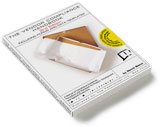Manufacturer ID |
Numbers (digits) used to represent a vendor in the UPC (Universal Product Code) number. |
Marker |
A full-scale diagram, usually on paper, indicating the most economical placement for all the graded pattern pieces in a garment and used in cutting the fabric for production. A marker can be made manually or with the aid of a computer. The marker must take all variables in the garment and fabric into consideration: matching print or woven patterns, grain lines, directional cutting, etc. |
Master Bill of Lading |
A uniquely numbered Contract-of-Carriage document that summarizes more than one shipment or sub-bills of lading. |
Matching (Match Points) |
The choice to match various repeating elements in patterned fabric (prints, stripes, plaids or embellishments) across the garment in order to balance the visual “effect” of the pattern on the body. Match points can be at the front of the armhole, across the front opening, at various seams or applied details. Matching usually incurs additional cost and preparation time, but also indicates higher quality. |
Mercerized |
A process were cotton yarn or cloth is treated with a caustic soda solution which improves the strength of the goods, as well as improves dyeing and color intensity and usually imparts a permanent luster to the product. |
Microfiber |
Any manmade fiber where the diameter of each filament is less than 1 micron. Microfibers can remain in filament form or can be cut into staple lengths for spinning. Microfiber refers to the fineness of the fiber and not to a specific textile construction or weave. |
Migration |
The non-uniform movement and distribution of dyes, pigments, finishes, or other materials from one part to another - bleeding, crocking, etc. |
Mill |
A company that is responsible for the initial spinning of yarns or the knitting or weaving of textiles. A vertical mill refers to a company that can take the product from spinning to final finishing and then to the market. |
Minimums |
The minimum quantity that a vendor or mill requires of the customer in order to contract their goods as in: yardage, yarn poundage, finished piece goods, etc. |
Mode |
Method of transportation (type of service) used for shipments. Usually Surface or Air indicated on the PO. |
Multimodal Transport |
Transportation that includes at least two modes of transport, such as shipping by rail and by sea. |
Muslin (Toile) |
An inexpensive fabric (traditionally an un-bleached cotton sheeting) used to develop and test the prototype for design, fit and proportion. The muslin is often taken apart and used to make the first pattern for preliminary samples and patternmaking. Fabrics for the “muslin” are usually selected to approximate the final fabric choice in weight and drape. Construction notations are often written on the outside. |
